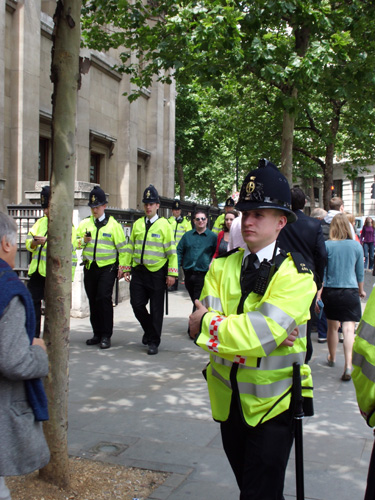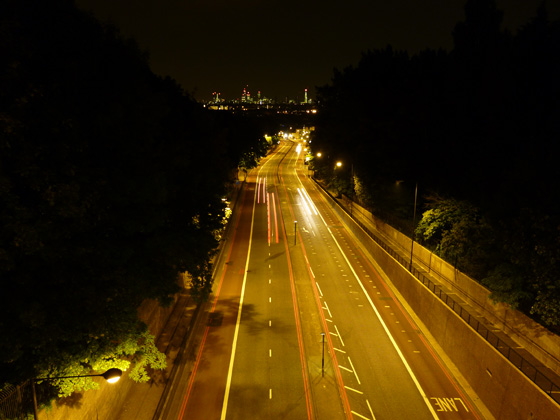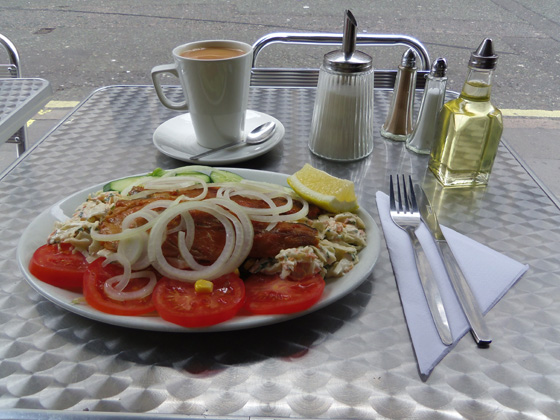Original URL: https://www.theregister.com/2011/07/01/ten_compact_cameras/
Ten... pocket compact cameras
When a phonecam just won't do
Posted in Personal Tech, 1st July 2011 06:00 GMT
Product Round-up When it comes to quick pics, the expedience of a phonecam can't be overestimated, yet the image quality expectations frequently are. With this in mind Reg Hardware has rounded up the smallest and cheapest compacts produced by all the usual suspects from the photography world.
Here are ten cameras that will not only take decent snaps but are pocket-friendly too, in more ways than one. They are easy to carry around and at a price that won’t cause too much pain if lost in a bar in Cupertino.
All the cameras in this round-up have optical zooms lenses, yet none of them have optical viewfinders. Reliant on LCD screens, the sizes of which vary from 2.4in on Samsung’s ST30 up to 3in on the Canon, Olympus and Sony, with only the Fujifilm having a touchscreen.
Being real cameras, rather than phone add-ons, you get all the niceties of a decent flash, tripod mount, swappable batteries and SD cards, with Samsung’s ST30 being an odd one out here as it uses Micro SD cards. All of the models take video too, but you get a real mixed bag starting with standard def-ish VGA (640 x 480) all the way up to 1080p HD. Sensors also range from 10.1Mp to 16Mp, and while some might not have pixel counts to match the top end phone cams, the optics and physical sensor size on these compact cameras will surely win the day.
Canon Ixus 115 HS


Canon shaves a millimetre off here and adds another there with its compacts, yet even at the lower end, they still cost a few bob. For an extra £30 over the Ixus 105, the Ixus 115 HS features 1080p video recording at 24fps, a 3in LCD screen and a slew of effects, among them fish-eye, miniature and toy camera.
The camera’s curves try and disguise its chunkiness – at 93 x 56 x 20mm and 140g, it’s no Slim Jim. Protrusions are kept to a minimum though, with recessed Auto/Program switching, power, shutter and zoom lever lining the top plate. The back features a typical five-way navpad – which is small and fiddly – with additional buttons for playback, menu and video recording.
The 5-20mm (f2.8-5.9) 4x zoom lens is equivalent to 28-112mm on a 35mm camera, delivering a useful range that’s pretty much standard fare for compacts at this level. However, the Canon is unique in this test as it features a 12.1Mp backlit CMOS sensor, rather than a CCD.
Power on to capture was consistently under three seconds, and although its large display looks clear, crisp and not overly bright, it does suffer a noticeable green cast. Thankfully, this wasn’t apparent on the images, so it’s not simply a white balance issue. On a range of subjects the Canon performed admirably, with good colour balance and well-judged ISO and exposures choices in auto modes.
While some complex compositions lost detail in the lighter areas, shadows came out well and exposures never looked washed out or dark. Flash coverage was nice and even too. The video was quality was also very good but during capture you can’t alter the zoom or the focus. Overall, the Ixus 115 HS does what you’d expect from Canon, but it’ll cost you more than double some of the models listed here, which impacts on its overall rating.
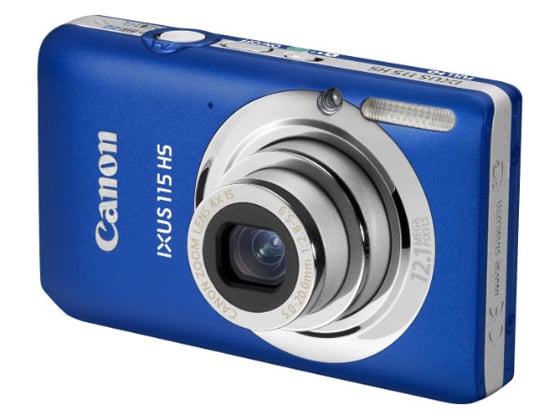
Reg Rating 80%
Price £179
More Info Canon
Casio Exilim EX-ZS10

The EX-ZS10 maintains the thin form-factor reputation of Casio’s Exilim brand. While it measures up at 95 x 56 x 19mm, this is quoted at its thickest around the lens assembly, the body itself is a good 2-3mm smaller. Weighing the same as the Canon, it has a power button and zoom lever along the top. Curiously, there’s a second power button on the back along with a video button to record at a maximum of 720p HD at 30fps. The navpad drives an on-screen menu rather than dedicated functions and scrolling through them can be time consuming.
This 14.1Mp camera is rather slow on the draw, taking a shade under 4s to power on and shoot. The 2.7in screen is a perfectly adequate – clear, bright and with no colour cast. Featuring a 5x zoom lens (4.6-23mm, f3.2-6.5) while not the brightest here, it boasts a wider-angle lens than most, with a 35m equivalent range of 26-130mm. When recording video, it’s a fixed focus affair, although you can set the focal length before shooting. Zooming to 4x during capture is possible but it's rather jerky.
The autofocus tends to lock the screen momentarily in any of its options, including initial use in tracking mode, which is distracting. Some shots revealed a tendency to oversaturate too, due partly to underexposure.
While the specs of the Casio seem quite respectable, the devil is in the detail with JPEG artefacts obvious in even low ISO shots that muddy the definition. Chromatic aberration appears quite pronounced too. Also, if you’re a Mac user, the Motion JPEG AVI video wouldn’t play using the QuickTime X Player, but was viewable with VLC.
Reg Hardware has been told that the EX-ZS10 is due a promotional price drop to £100 in July, which does mean you could get a compact HD video recorder, but for stills, it’s just not the sharp shooter it should be and certainly not worth the original asking price.
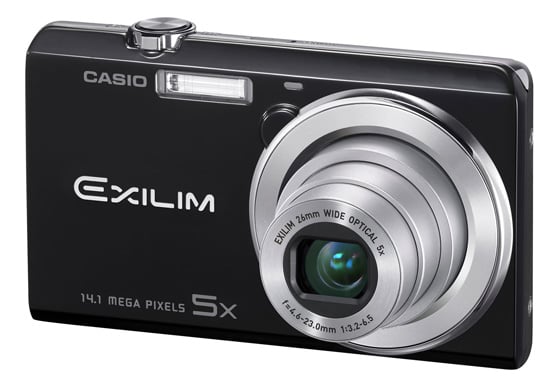
Reg Rating 45%
Price £229/£99
More Info Casio
Fujifilm Finepix Z90

The Z90's slide-down front powers the unit and the reveals a non-protruding lens array in the top right corner - a different design to the other cameras here. Yet, at 95 x 57 x 20mm and 150g, it’s among the bulkier models. The top panel features a zoom lever, shutter release and, rather confusingly, a video capture button positioned where all others in the group have the power function. Too many times useless video clips were taken inadvertently.
The Fuji’s 3in widescreen touch display also stands out. The actual viewing area for standard snaps is equivalent to a 2.4in display - the icons needed to drive the various menus line the borders. However, in video mode, the screen is filled, likewise if you choose the widescreen stills aspect.
In use, the screen was responsive enough, but appeared a good deal darker than others on test and this, combined with a small area for 4:3 shooting, meant that it was never particularly clear how well focused images were except for close-ups. Power up to shot took just under 4s, thereafter the autofocus seemed a tad hesitant but not enough to dampen confidence.
The Z90 is a 14.2Mp snapper, with 5-25mm, f3.9-6.2 zoom, equivalent to 28-140 mm on a 35mm camera. Interestingly, it does allow use of the the optical zoom during HD video capture - 720p at 30fps - although you will hear it whirring as you adjust it and the focus remains fixed from the point where you started shooting.
Overall, the images on the Fuji were satisfactory rather than above par. Flower petals tended to saturate and lose detail, with JPEG artefacts quite evident in blue skies and other large areas of single colour. Exposures seemed reasonably well-judged though, but apart from its design and the novelty of touchscreen tweaking, nothing about the Z90 stood out as exceptional, although it is pricey. That said, the smooth optical zoom video capture could well come in handy, especially with the widescreen viewing.
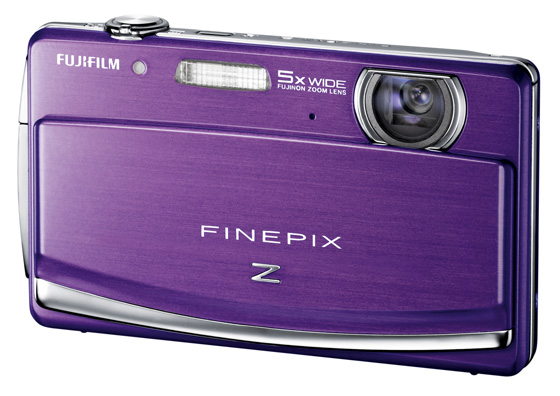
Reg Rating 65%
Price £149
More Info Fujifilm
Kodak EasyShare Mini M200

Measuring up at 86 x 52 x 19mm and weighing 100g, the 10.4Mp EasyShare Mini M200 is indubitably pocketable. However, there is a price to be paid to be second smallest model here – behind the Samsung ST30 – and that is both have a 1/3in sensor, rather than 1/2.3in featured on all the other models on test. The 3x optical zoom lens has a 4.1-12.3mm range equivalent to 29–87mm on a 35mm camera. Although it lacks image stabilisation, the M200 has the usual range of photo modes and captures VGA video at 30fps.
The top plate is slightly confusing with a button sat between the power and shutter release to engage the mode options. The back panel has a navpad, but the options are menu driven, so until you get familiar with reaching for that top plate button, performing tweaks can seem impossible. The 2.4in display is bright enough, seems accurate and unlike the Samsung has 230k dots which makes a significant difference to focus confidence.
Indeed the autofocus performs well, only jittering momentarily in low light, yet without image stabilisation, the M200 rather loses appeal unless you’re happy with high ISO shooting or flash, the latter being quite even and effective. Zoom in on the images and the artefacts bloom like watercolours. Although the definition can’t match others in the group given the pixel count and sensor size, the problems do seem quite well suppressed with few random elements. However, the lens is a problem, with some serious blurring at the edges noticeable in most of the shots.
Start up time to shoot is a boon on this camera, being among fastest at around 2.5secs. The MJPEG AVI video capture is rather gritty and will shoot from the current optical zoom setting, with a digital zoom kicking in when required if pixellation is your thing. Despite a decent capture performance, optically, the Kodak falls below expectations and as a consequence needs to be a good deal cheaper than it is.
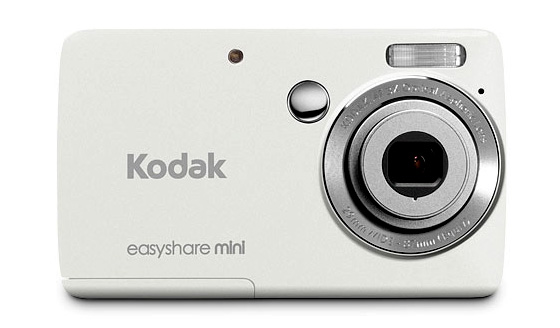
Reg Rating 40%
Price £80
More Info Kodak
Nikon Coolpix S2500


With the Coolpix S2500, Nikon seems to be coming at the cheap and cheerful compact snapper from the right angle. Here is a competent camera that doesn’t overload you with features that you would otherwise have to pay extra for. At 93 x 57 x 20mm and 117g it's neither bulky nor weighty and features a 2.7in screen which is a good compromise size.
In fact, the screen is one of the big plus points as everything looks so good through it that you can snap away in complete confidence. Likewise the controls on the back are such a familiar navpad layout, with dedicated functions, that tweaks are easily enabled.
This 12Mp shooter has a 4.9-19.6mm, f/3.2-5.9 lens (35mm equivalent to 27-108 mm). Zoomed in, some images showed just a hint of purple fringing, which may be a CCD sensor issue, but the definition holds up well.
Autofocus is responsive and exposures seem spot on. If you don’t burden it with too massive a storage card, start up can be around 3s. Yet using a 32GB Class 10 card pushed it up to 5.5s. The MJPEG AVI video is standard def at 30fps, set your focal length and shoot – if you try and zoom then a digital option kicks in quite smoothly, such that it borders on useable.
For 100 quid you don’t get all the bells and whistles but what you do get is an excellent compromise that won’t disappoint.
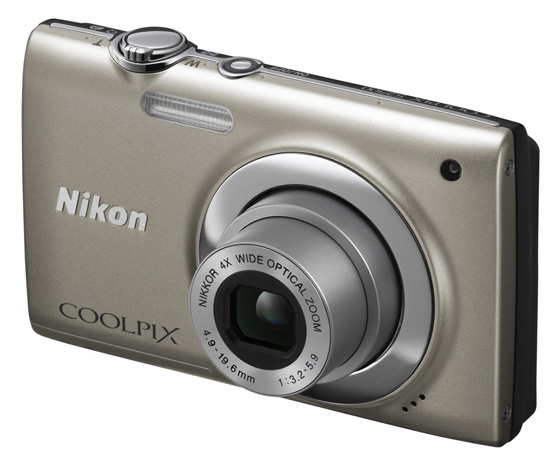
Reg Rating 85%
Price £100
More Info Nikon
Olympus VG-130

The VG-130 is one of the largest camera of the bunch, at 96 x 57 x 19mm, but we’re talking cigarette papers here in comparison with the likes of the Fuji. At 125g, it’s light, yet features a 14Mp sensor, records 720p HD video at 30fps and has a 5x optical zoom. The lens range is 4.7-23.5mm, f2.8-6.5 (26-130mm, equivalent on a 35mm camera), so it has quite a decent wide angle, impressively presented by its 3in screen on the back.
The top plate is just power and shutter release, with the backplate housing the zoom rocker control along with buttons for movie recording, menu and play, plus a navpad that executes on-screen options rather than dedicated functions. Fire it up and it takes 2.5s to shoot, making it among the fastest off the blocks. Its MJPEG AVI video looks good too, but the sound is a feeble 8-bit at 8kHz.
The Olympus seems promising in many areas, yet its auto modes - which include intelligent auto - were quite bizarre for some conditions, as it would hop from ISO extremes – shooting at 80 ISO and then notching up to 800. This seemed to happen quite often. Indeed, the camera resolutely prefers to remain entrenched at ISO ratings of 125 or below.
Despite trying different modes, checking the EV and even a factory reset, the VG-130 just wants to shoot old school, as if it were loaded with Kodachrome 64. Sure, you can manually set the ISO, but in high contrast conditions, this camera needs cajoling to work at higher speeds to avoid shaky shots, as the image stabilisation can’t perform miracles.
When it does pull it off, the exposures seem extremely well calculated – vibrant colours and capturing more detail than others in the group – but it needs work, and a steady hand, to get there. If you’d rather live with noise than camera shake, the VG-130 would probably benefit from being manually set on ISO 200 and left to work around that. You’d probably have no complaints.
For those that don’t mind fiddling, the VG-130 is a bit of steal at £90, but as far a point and shoot goes, it’s just too fussy.
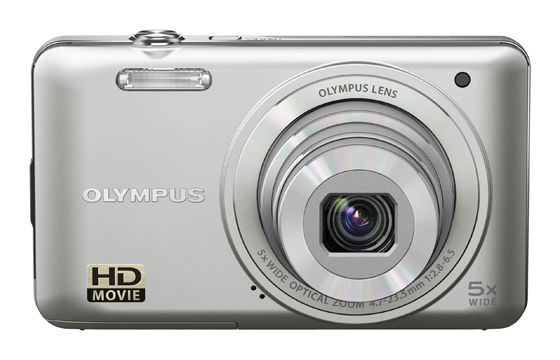
Reg Rating 65%
Price £90
More Info Olympus
Panasonic Lumix DMC-FS18


Topping the group with a 16Mp sensor, the DMC-FS18 has a few quirks in the form of its sliding switches. There’s one for power on the top plate next to the zoom lever and shutter release, and round the back another one flips between capture and playback modes. With buttons and a navpad with dedicated functions dealing with the rest of the operations, moving from those instinctive button presses to sliding switches seems counter-intuitive.
Moreover, no matter how secure that power switch is supposed to be, I found the camera turned on in my bag, with lens fully extended on more than one occasion. If you plan to carry this camera in your trousers be prepared for inevitable question: is that a Panasonic Lumix DMC-FS18 in your pocket or are you just pleased to see me?
Switches notwithstanding, at 94 x 54 x 19mm and 121g, it certainly is pocketable and fires up and shoots in 1.7s, the fastest gun in the test. Its 4x optical zoom, 5-20mm f3.1-6.5 (28-112mm equivalent 35mm camera) lens has the distinction of being a Leica design and shows little sign of imperfection, with the hints of purple fringing being a possible CCD artefact. You can alter the focal length before video recording, but there’s no zoom available during capture. It records MJPEG Mov files with a maximum resolution of 720p at 24fps.
When shooting, this camera just seemed to get it right, whether using a program mode or the intelligent auto. While some images were a tad burnt out in places, you could forgive it because of the consistent quality it delivers overall. That high megapixel count impacts on the images too, with the definition perhaps suffering from over-processing - some scenes seem a tad too vibrant - yet in other challenging shots, there was minimal colour bleed and respectable noise control.
The only real downside of this camera is its power switch. During testing it died because it turned itself on in transit and there seems to be no auto power off. Even so, it’s well worth considering as this Lumix is a great all-rounder. However, you need to budget for an extra battery or a very good case, which rather bumps up the price, but it is worth it.
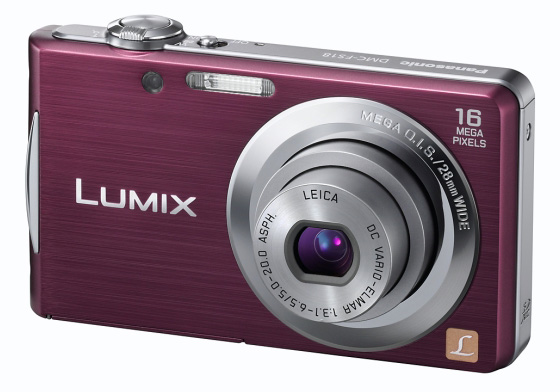
Reg Rating 75%
Price £150
More Info Panasonic
Pentax Optio S1

Yes, it really is that colour which, together with curved edges, suggests someone at Pentax is a Nissan Figaro fan. While not exactly flimsy, it looks like a toy, and that theme is extended to the transparent buttons it has that show icons or text beneath them. At 90 x 54 x 20mm, it’s shorter, yet fatter than the Nikon but shares 2.7in screen size. With just power and shutter release on top, the buttons at the back are a familiar array of dedicated functions, including a movie recording mode.
This 126g compact has a 14Mp sensor that surprisingly offers a range starting at 64 ISO all the way up to 6400. Also appealing is its 5x optical zoom with a range of 5‐25mm, f/3.9-5.7 (equivalent to 28‐140mm in 35mm). It captures MJPEG AVI video with a resolution of 720p at 30fps. Add to that a shoot to snap time of around 2.5s and it seems like Pentax has a winner on its hand.
While the Optio S1 looks good on paper, it’s a very poor performer when it comes to autofocus. It seemed like it was just making it up, as if Blythe “I can see perfectly...”, Donald Pleasance’s character from The Great Escape, had been working on the design team. Night shots proved even worse with no obvious areas of sharpness. There are preset and manual focusing options though, so you can get somewhere if you persevere. Indeed, video seems a better bet on this model, with a digital zoom kicking in beyond initial focal length settings.
Focusing issues aside, this compact makes some pretty good exposure judgements, erring on under-exposure more, and chooses ISO settings wisely to maintain a steady shot. The screen looks good too but this new kid on the block seems in desperate need of a firmware update as even a factory reset failed to cure its wayward vision.
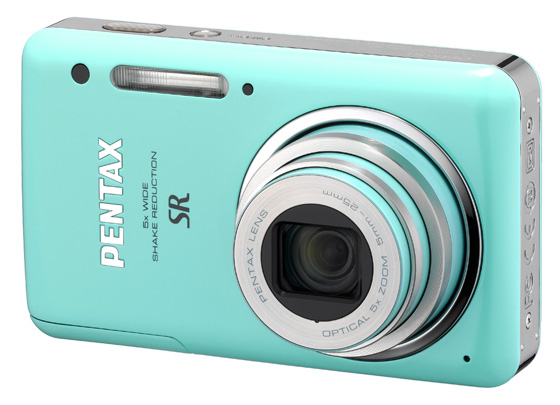
Reg Rating 50%
Price £120
More Info Pentax
Samsung ST30

Touted as the "world’s smallest optical zoom camera", the ST30, at 82 x 52 x 17mm, is only marginally smaller than the Kodak and, at 86g, only a touch lighter. With power and shutter release on the top plate only and a typical array of dedicated controls at the back, this 10.1Mp snapper is delightfully dinky.
Turn it on and the first thought is: yuk. The 2.4in screen resolution is only 112k dots, so it looks decidedly low-res compared to the other models here. This does lead to an assumption that the images are as grungy as the screen. Thankfully, they’re a pleasant surprise, especially when compared up against the Kodak, which also has a 1/3in sensor.
Samsung’s 4.1-12.3mm, f3.3-5.9 (35mm equivalent 28-84mm) 3x zoom lens performs better than the Kodak too, taking surprisingly good macro shots, as well as proving to be a good all-rounder. It’s also quick off the draw at just under 2.5s from start to shoot. The autofocus response was also within respectable limits and coped well for low light and night shooting.
The MJPEG AVI video recording is standard def but does allow use of the optical zoom. However, like many of Samsung’s compacts, the company 'thoughtfully' kills the audio by default, so your clips aren’t spoiled by the machinations of the zoom. You can turn the mic on in the settings and even choose to mute during zoom, but it’s all just daft. Don’t kill the sound, Samsung, users expect audio on video, and if there is a bit of noise, it can be dealt with later.
As a step up from a phonecam, the ST30 certainly hits the spot, with the low-res screen and Micro SD storage choices being the only things to grumble about. If you’re content with a 10.1Mp resolution, as a point and shoot snapper, the ST30 puts in a thoroughly respectable performance with good ISO choices, spot on exposures and an autofocus that gets it right just about every time.
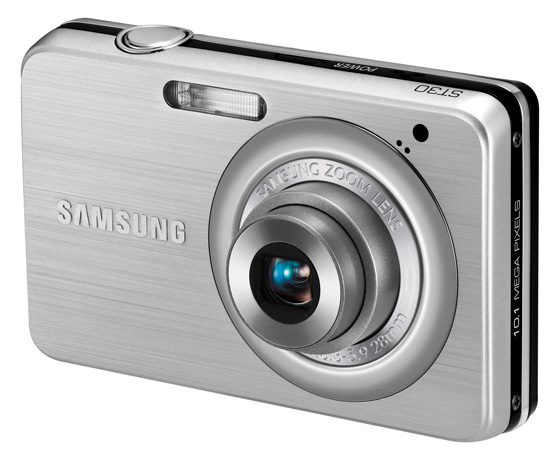
Reg Rating 70%
Price £90
More Info Samsung
Sony Cyber-shot DSC-W360

When searching Sony’s offerings for a small and cheap compact, the DSC-W350 seemed to fit the bill, but it looks like this model is soon to be phased out. However, Jessops has the exclusive on the DSC-W360, which to all intents and purposes is the same camera, featuring a 3in screen and, consequently, a fractionally bigger body at 94 x 56 x 17mm weighing 107g.
This Cyber-shot’s 4x optical lens (4.7-18.8mm, f2.7-5.7), has a 35mm equivalent of 26-105mm putting its wide-angle shooting on a par with the Casio and Olympus. Indeed, it features the same resolution sensor as these models: 14.1Mp. Along the top is just power and shutter release, and the backplate has dedicated function keys, along with a slider to switch modes from stills, panorama and video.
It records 720p HD video as MP4 files at 29.97fps and you get full use of the optical zoom – with some momentary whirring noises thrown in while you do so – making it the most versatile for movie making, although 25fps would be nicer. Power up to capture was good too, at just over 2.5s.
The Sony was easy to overlook during tests because it gave so little cause for concern. Its performance was so consistent, delivering a very low failure rate that was on a par with the Canon and the Nikon. The camera proved a steady shooter with very crisp colours and nicely suppressed JPEG artefacts, although it was inclined to under-expose slightly in challenging lighting, but not too drastically.
Although the sensor seems up to the task, the wide-angle lens performance at the edges loses definition, but nothing like the Kodak. The screen, while large and bright, soon appears washed out if not held directly in front you, so sneaky waist level shots are a bit more of a challenge than need be. But unless you’re going in for poster prints, these imperfections will most likely go unnoticed - this camera does have a high megapixel count, after all. Given its current price, and its consistent delivery as a point and shoot performer, it’s unlikely you’d be disappointed with this Cyber-shot. ®
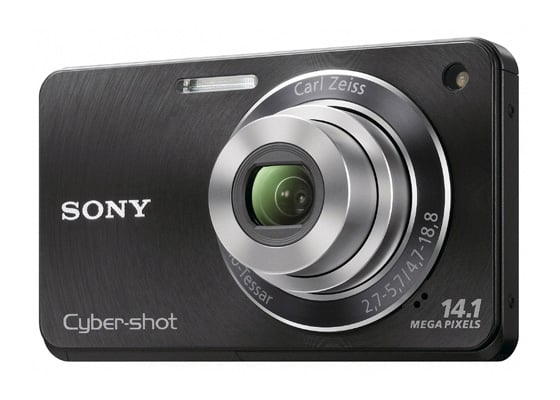
Sample Shots
Wide-angle sample from all cameras here (40MB zip) and tele-photo here (43.2MB zip).

